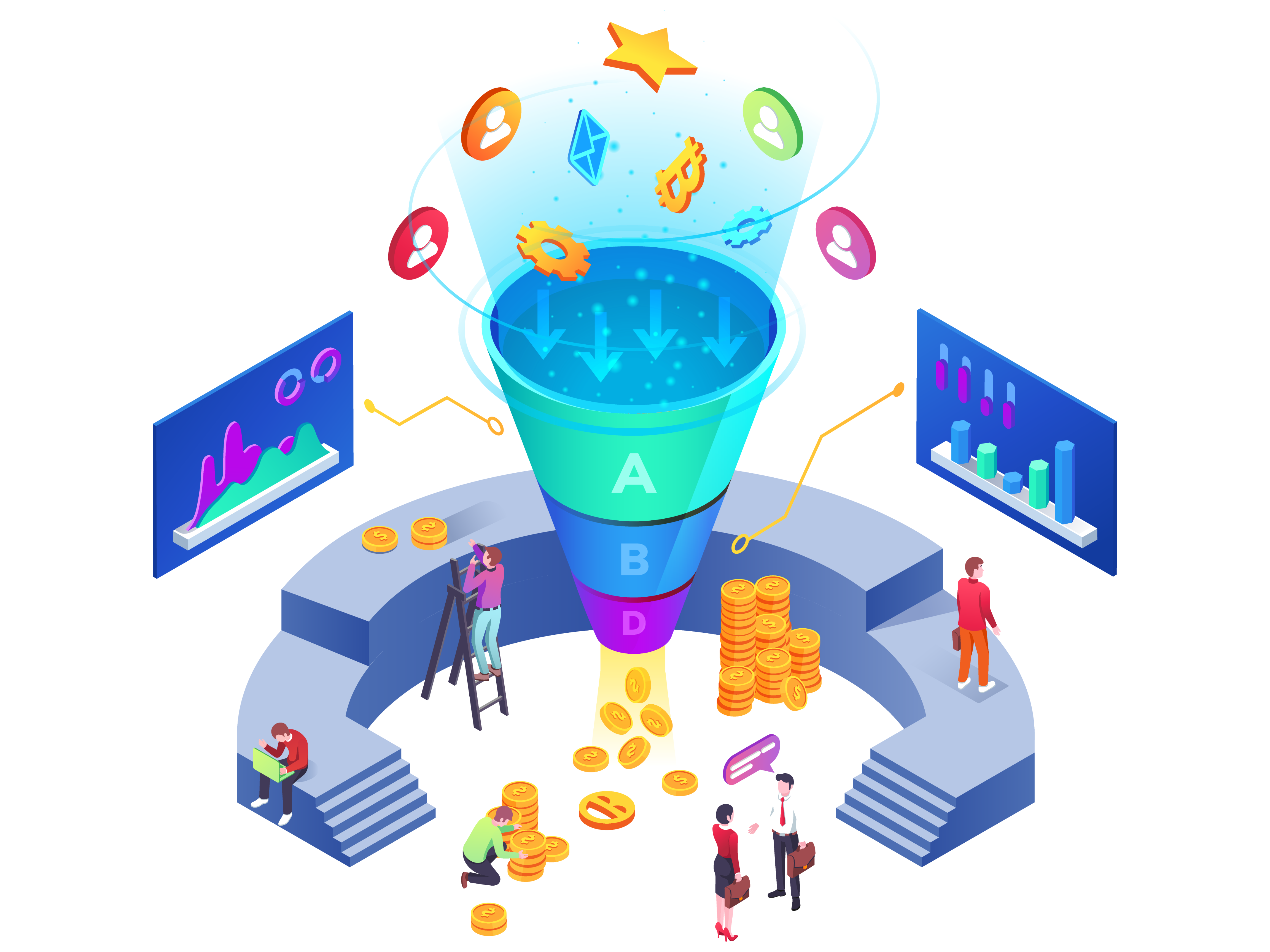If you’re looking to improve your email marketing, it’s well worth the effort!
Email has a higher ROI than just about any other marketing channel.
Studies show that email produces anywhere from $36 to $70 for every dollar invested.
I can tell you first hand these stats are not overblown.
The entrepreneurs we coach see an average ROI of 264% from email marketing.
And the average rate of growth that email marketing generates year over year for these businesses is 81%!
The guide below will show you exactly how these businesses get marketing-beating results.
It breaks down the most effective email marketing strategies we’ve tested and proven.
And it’s loaded with tips to improve your campaigns and give your email marketing efforts an edge.
Let’s get started by fine-tuning the most critical part of your email marketing machine.
Growing Your Email List
New subscribers (or leads) are the key to a thriving email marketing machine.
Because no matter how great your emails are, you can’t truly grow without attracting new leads.
The key metric to focus on when it comes to growing your subscriber list is the opt-in rate.
Your opt-in rate is calculated by dividing the number of people who join your email by the total number of people who visit your website.

The average opt-in rate is around 2%.
By and large, our students and clients outperform the average by 50 to 400%.
They’ve produced these strong results by focusing on three key list growth tactics.
You can read our complete breakdown on how to rapidly grow your email list in this post: How To Increase Opt-In Rate On Your Website
But I’ll also summarize our top email list growth strategies for you here…
List growth tactic #1: Lead with your best lead magnet
In order to get as many website visitors as you can to opt-in to your list, you need a great opt-in offer.
Typical opt-in offers include a discount, a free newsletter, a white paper, or a download of some kind.
These offers are also referred to as lead magnets… because they attract leads to your email list.
The best lead magnets do three things really well.
1) They offer your website visitors a taste of something they came to your site looking for.
2) They offer an immediate reward for opting in.
3) They are a bridge to purchasing your product(s).

Here are some examples of a lead magnet that produce high opt-in rates:
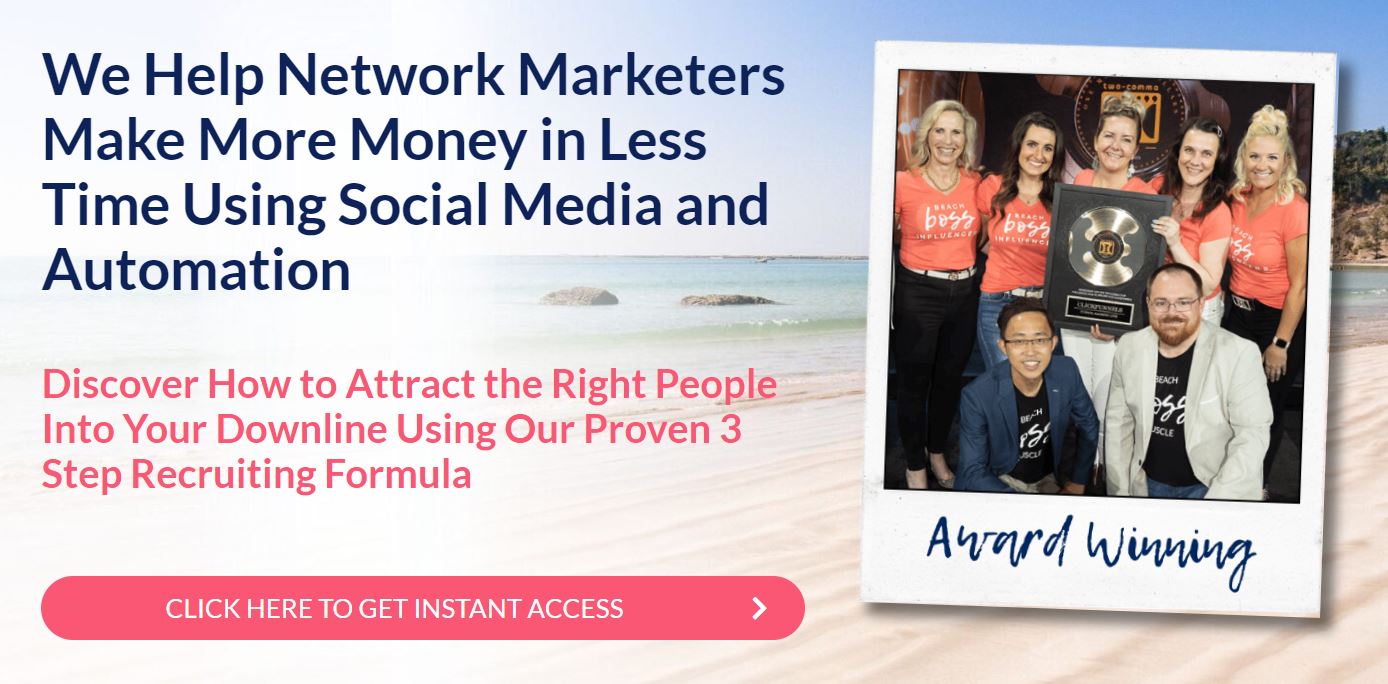

List growth tactic #2: Feature your lead magnet EVERYWHERE
Once you have dialed in your lead magnet, don’t be sheepish about sharing it.
Put it EVERYWHERE.
On your homepage.

In your blog posts.
In pop-ups.
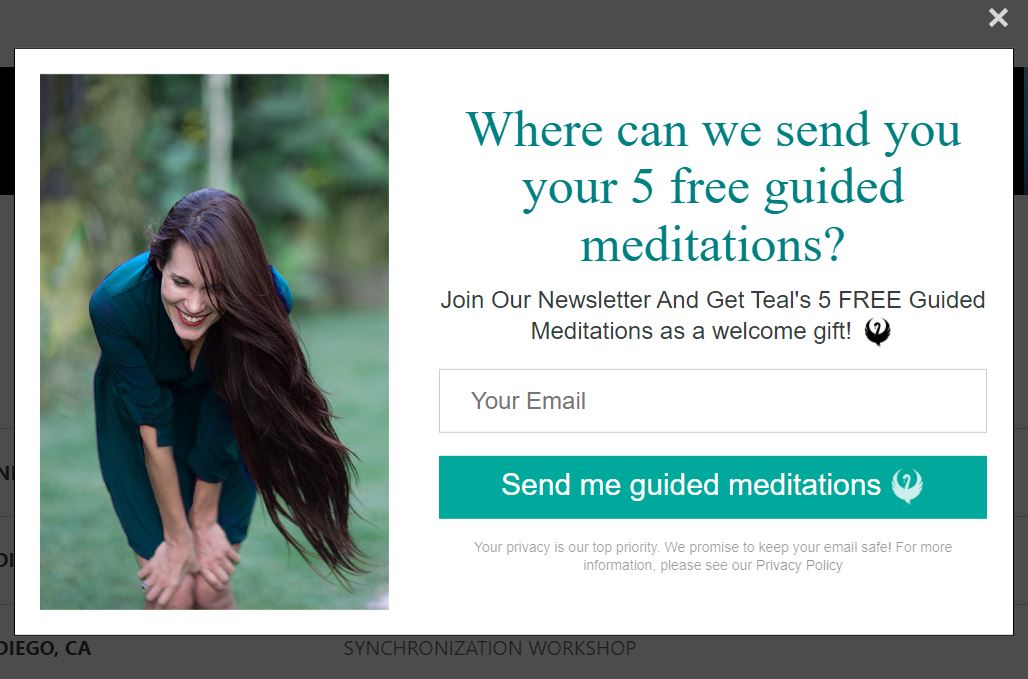
Get it in front of as many website visitors as you can, and your list size will grow fast.
List Growth Tactic #3: Go social
The great thing about having a desirable lead magnet is it will also attract leads off your site.
Our clients and students have great success sharing their lead magnets on social media.
In fact, this tactic alone allowed one of our clients to increase their number of weekly opt-ins from around 800 to over 5000 new subscribers every week!
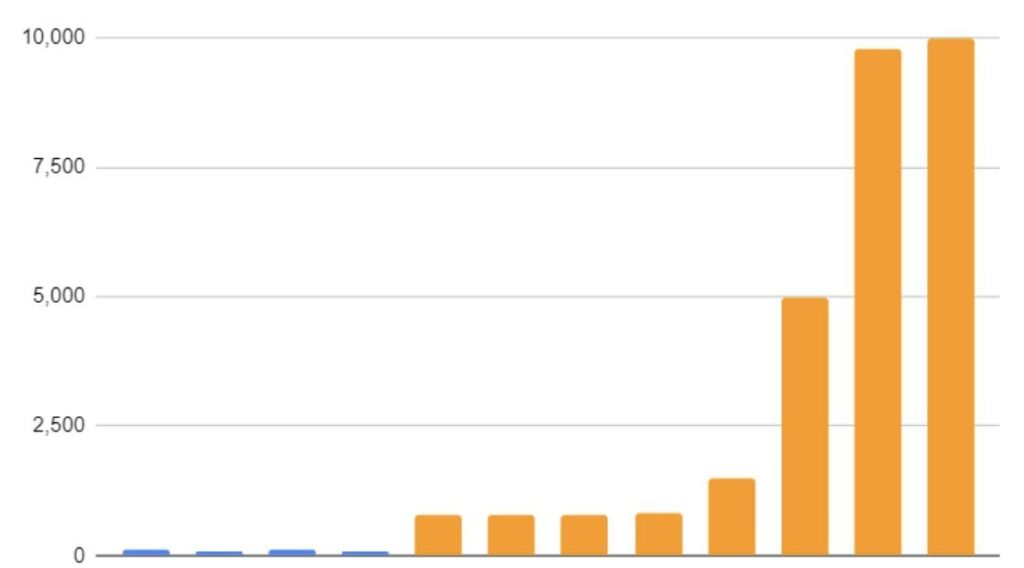
So don’t be shy about sharing your lead magnet on social.
Link to it in YouTube videos.
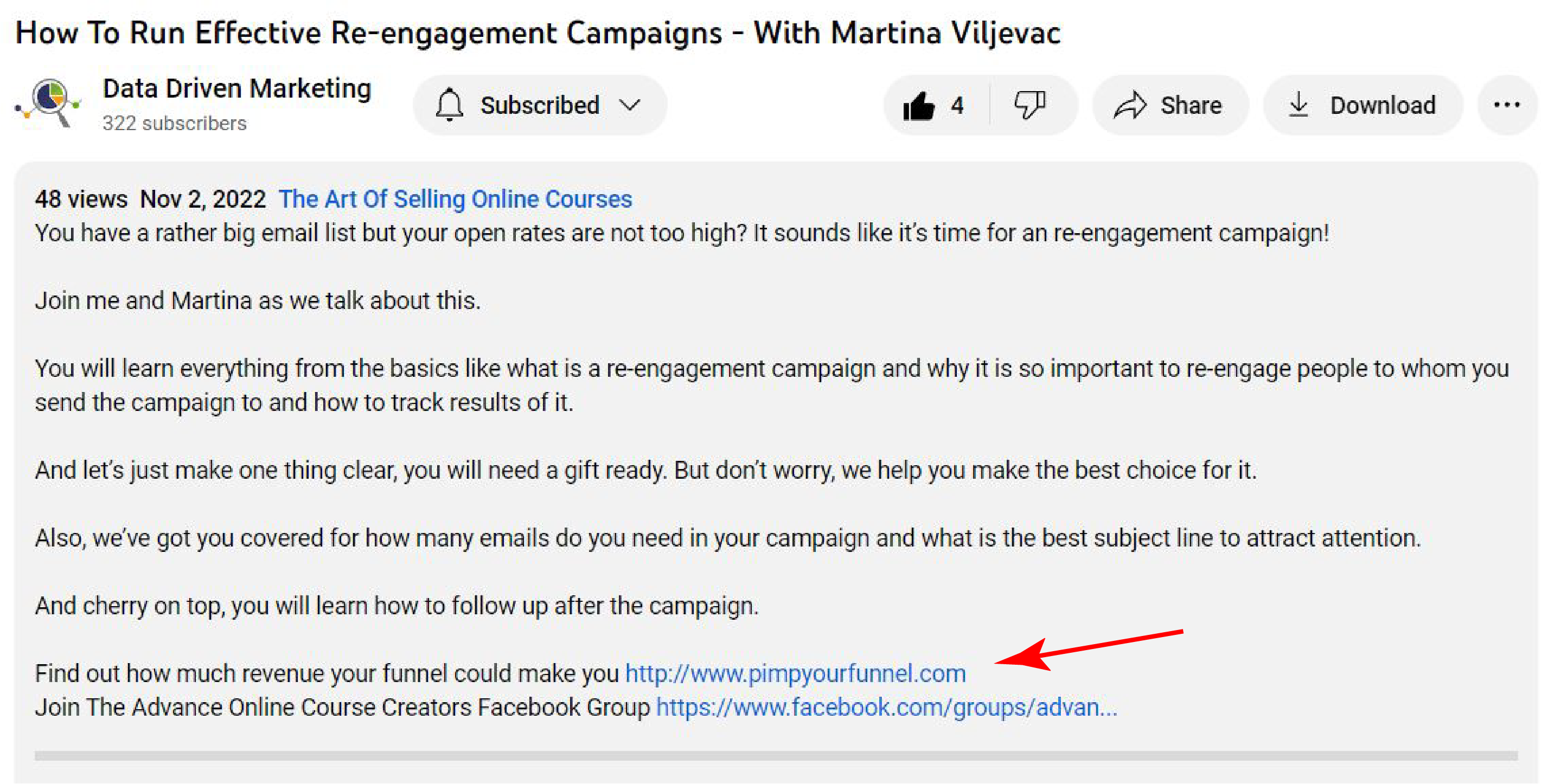
You can also link to your lead magnet in your posts, stories, and social bios.
Now that you know how to rapidly grow your email list, let’s move on to sending campaigns.
What is an email marketing campaign?
An email campaign is any message or series of messages you send to your email list:
You can use campaigns for a lot of different purposes, including
- Sharing news
- Introducing a new product
- Offering a sale, or a limited time promotion
- Educating your audience about your company or products
- Nurturing interest in a specific topic, activity, or product
- Surveying your audience
Whatever type of campaign you’re sending, the key to getting results starts with deliverability.
The key to effective email marketing campaigns – Deliverability!
Deliverability is the ability to deliver emails to your subscribers’ primary inboxes.
All mail hosts have filters.
The goal of the filter is to ONLY show the recipient the emails they want and need to see.
Everything else gets sorted into the promo, spam, or social areas of your subscriber’s mailbox.
As you’re probably aware from looking at your own mailbox, emails that don’t hit the primary inbox don’t get read.
So creating campaigns that get results all starts with making those campaigns deliverable.
Your Open Rate, a measure of the percentage of subscribers who open your email, is how most email software measures deliverability.

How to get your campaigns delivered, open, and read:
Open Rate has become a less accurate metric in the past couple of years due to mail privacy protection.
But it’s still a good indicator of deliverability.
Average open rates vary greatly depending on your market, the quality of your list, and other factors.
So it’s not really worth benchmarking yourself against other email marketers.
Instead, get a baseline for how your email campaigns deliver now.
And use the following tips to gain an edge that will quickly increase your deliverability.
8 tips to increase the performance of your email campaigns
Tip #1: Text is King, NOT pictures.
Email is still, even after all these years, a text-based tool.
Yes, every email marketing software gives you the ability to create beautifully designed emails.
But look at the type of email that winds up in the promo area of your inbox vs. the primary.
For most people, the primary inbox is full of emails that include only text. And the promo tab is full of a bunch of pictorial emails that look like ads. There are exceptions to this rule.
But you’re more likely to get your emails delivered if you make the text readable and focus on your messaging.
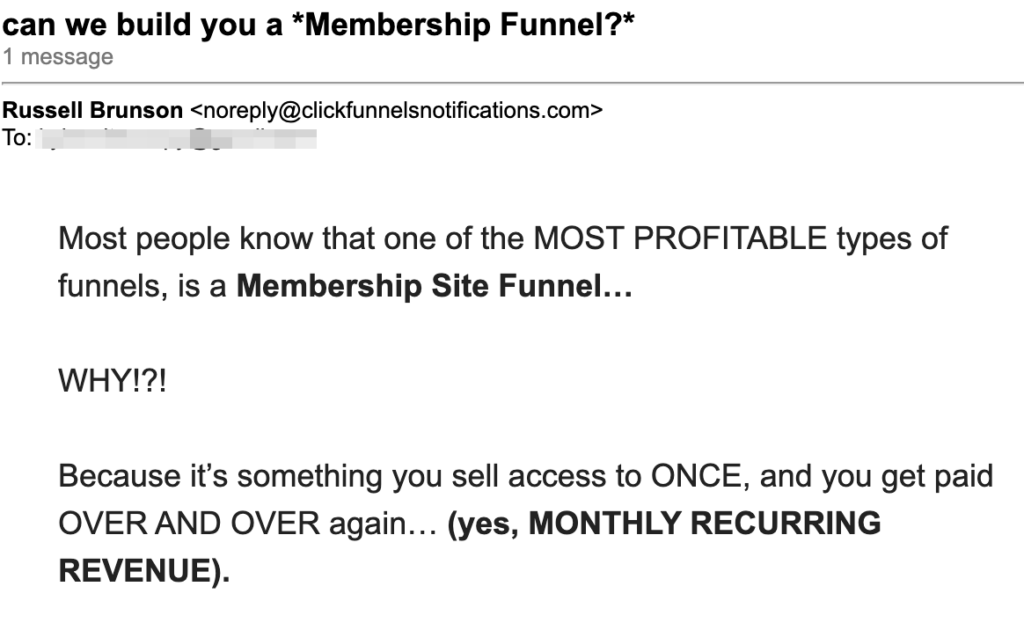
Tip #2: Email is a person-to-person tool
Once again, look at your primary inbox vs. your promo and spam folders.
Notice how your primary inbox has mostly emails from other people.
And your promo folder includes mostly emails from brands. If you want high deliverability, send emails that create a person-to-person experience for your readers.
- Use a name in the from field.
- User personalization addresses subscribers by name when appropriate.
- And write your emails like you are writing to one person, not many.
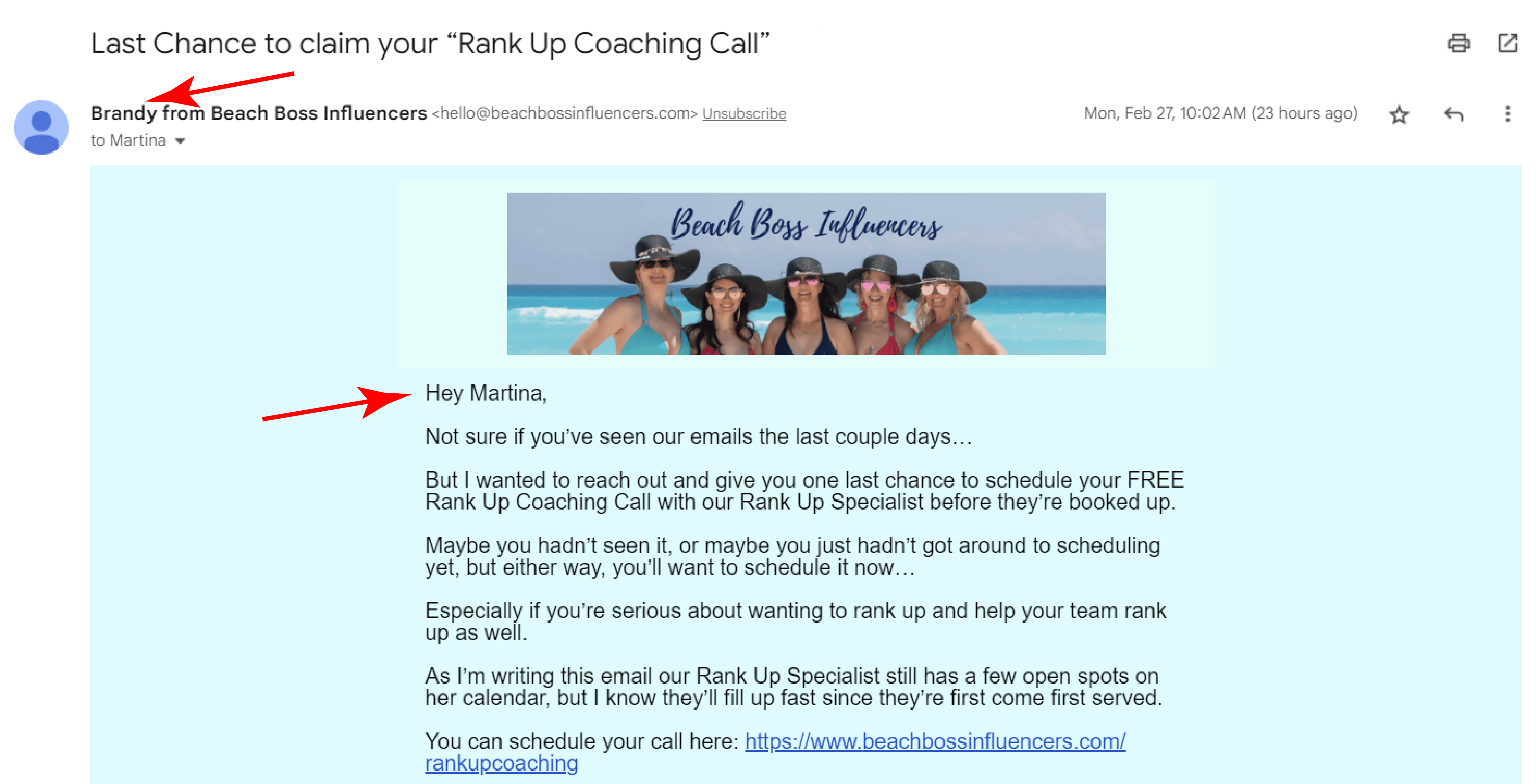
Tip #3: Focus on your Subject Lines
It goes without saying you want your subject line to stand out in your subscriber’s inbox. But how do you do this?
The most important thing is to think about what your subscribers want (not what you or your brand want).
Then use variations of the types of subject lines in the examples below to communicate your subscribers’ needs and desires.
Types Email Subject lines that increase open rates:
- Benefit-driven:
- Curiosity-driven
- Personal
- News Jacking:
Tip #4: Don’t forget the pretext
The pretext is that little line of preview text that appears next to your subject line in your subscribers’ inbox. Use this area to tease your email content and you’ll get more opens.
Tip #5: Lead with a purpose
Increasing deliverability isn’t just about your open rate.
You also want your subscribers to read, respond to, and click on your emails.
These actions send strong signals to your subscribers’ mailbox that your messages are important and worth featuring in the primary inbox.
So try to make your emails engaging right from the start. The best way to do this is with an opening line that draws your reader in and piques their interest.
Tip #6: Metrics to monitor
There are other email metrics, in addition to open rate, that can affect your deliverability.
Here are a few to keep an eye on:
Click-through-rate (CTR): the percentage of subscribers who click your email(s).

CTR varies from list to list and industry to industry. But clicks are important. After all, clicks are how you send traffic from your list to your promotions.
Unsubscribe rate: the percentage of people who unsubscribe from your email(s).

Unsubscribes happen. Don’t let them bother you. But aim for an overall unsubscribe rate below half a percent (.50%).
Spam Complaints: These are subscribers who report your email as spam.

Getting a lot of spam complaints can damage your sender reputation and hurt your deliverability. So try to keep your spam complaint rate below .02%
Bounces: Bounces are messages that could not be delivered because the subscriber’s address did not accept the email.

Usually, this happens because someone entered a junk email address when they opted into your list.
If you follow the recommendations in this guide, you should not get many bounces. But occasionally, check out your bounce rate to make sure it’s below half a percent.
Tip # 7: Use Segmentation
Most email marketing software allows you to divide your list into smaller categories or sublists.
This process is called segmentation.
And creating email segments based on your subscribers’ behavior is one of the most powerful tools at your disposal.
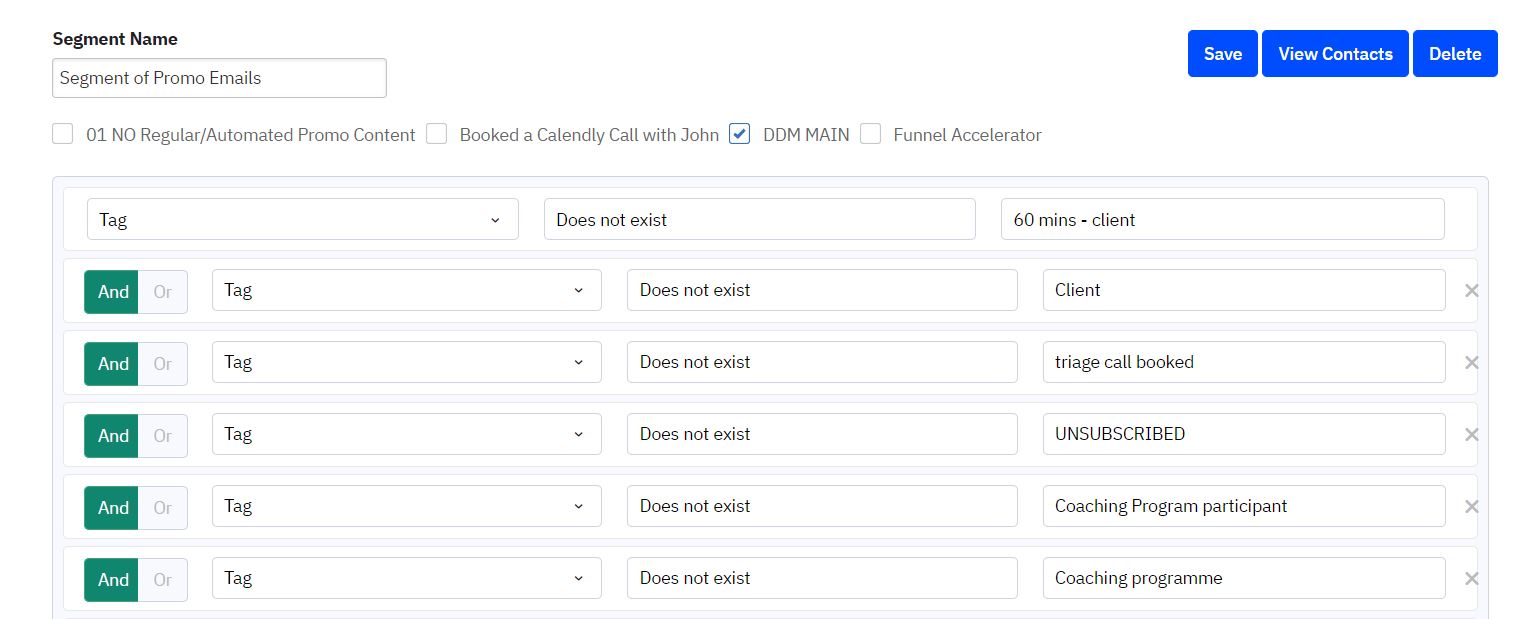
Using segmentation, you can choose to send an email to only people on your list who are customers. Or only people who are NOT customers yet. Or only people who engaged with your last email.

You can also block people from your emails who you don’t want to see a particular offer. Or people who haven’t engaged with your emails in a long time.
Using segmentation helps you send the right message to ONLY the right people on your list.
And when you segment wisely, it will increase all your key metrics, open rate, clicks, replies, etc.
So use segmentation often, ALWAYS.
Tip #8: Test every email you send before you hit send
Testing is one of the most important steps in prepping an email campaign. And MOST people get this step wrong. Let me show you how to test your emails the right way…
After you draft a new email campaign, you’ll want to send a “test” message to yourself to see how it looks in your inbox. (Almost every email marketing tool allows you to preview and test from your campaign draft area.)

Testing your email helps you see how it’s received in your inbox. It also helps you check all your links and formatting and other technical stuff.
However, the majority of email marketers are lazy with their testing, and that laziness can hurt deliverability.
Here’s how to do a test that shows how “deliverable” your email will be:
If you only send your test to one email account (your own), you won’t get an accurate preview of that email’s deliverability.
That’s because you’ve likely whitelisted your own emails. Or you’ve interacted with them enough that your inbox is conditioned to receive your messages.
But the same is not true for a lot of your subscribers. Most subscribers won’t whitelist your emails. And they also won’t open and click every message you send them.
They will interact with your emails like a normal busy person. So, you need to mimic your subscriber’s behavior to see how your emails are received.
Here’s how to do that…
You have three types of subscribers on your list
By and large, you’re going to have three types of subscribers on your list.
Engaged subscribers – These are your super fans. They open almost all your messages. They click a lot. They love getting emails from you.

Semi-Engaged Subscribers – These people kind of enjoy being on your list. They open your messages when they catch their attention. But they don’t have time to read everything you send them.

Disengaged Subscribers – These will look like deadweight on your email list. They don’t open or click any of your messages. Could be they don’t like your email. But it’s also possible they don’t see them because your messages go to their promo or spam folders.

To understand how your messages deliver to these three groups of subscribers, set up three “test” mailboxes.
Use whatever email host the majority of your list uses to create your test mailboxes. For example, if most of your subscribers use Gmail, set up your test account in Gmail.
In your test mailboxes, mimic the behavior of the three types of subscribers, engaged, semi-engaged, and disengaged.
In the engaged test account, open and click away on your messages.
In the semi-engaged test account, open the occasional message.
In the disengaged test account, NEVER open or touch your messages.
The goal of these testing exercises is to see where your emails land.
If in your engaged and semi-engaged test mailboxes most of your emails hit the primary inbox, that’s a good indicator.
You’ll discover a lot about how your emails deliver through this exercise.
And over time, it will allow you to vastly improve your results.
Now that you know how to get your emails delivered, opened, and read…
… Let’s move on to the next important weapon in your email marketing arsenal.
How to send email campaigns that generate sales without repelling your subscribers
When it comes to using email marketing to sell, the most common technique is to blast our “discount,” “sale,” or “shop now” messages.
This technique can work. And it can generate revenue.
But it’s also certain to damage your sender reputation because it will generate a lot of spam complaints and unsubscribers.
Also, it’s a “race to the bottom” approach to marketing.
It teaches your subscribers to buy only on price, not value.
To avoid those problems, I am going to advocate a different approach
One that’s been perfected by Data Driven Marketing.
It involves sending a three-part email series that includes a total of 9 to 11 emails
That may sound like a lot of work.
However, when you see how this email sales framework is constructed, you’ll realize that once you craft these emails, you can use them over and over again.
You can adapt them. Or make slight changes to keep things fresh.
This framework also makes it easy to come up with new content to send to your list each and every month.
More importantly, the marketers who use this framework have realized huge gains in sales, higher engagement, and a lower unsubscribe rate.
The 11 Email Campaigns that Sell!
Here’s the strategy behind crafting the “11 emails that sell”
Part one – The warm-up
Email 1 – Problem – Call attention to a problem your subscribers’ experience (one your product will solve). And tease your next email
Email 2 – Empathise – Empathize with the pain, frustration, or disgust the “problem” causes your subscribers.
Email 3 – Solve – Tease the solution to that problem. At this point, you can even offer a free download or show your subscribers a readily available way to start addressing the problem.
Time to segment: Before you move on to Part two, create a segment of only people who engaged with (clicked on or opened) your Problems, Empathize, or Solve emails. That is the segment you will email exclusively in part two of this series.)
Part Two – The Offer
Email 4 – Gain – Present your offer and show your subscriber what they stand to gain from taking your product or service.
Email 5 – Logic – Discuss the logical reasons your subscribers need the solution your product or service will give them. And show them how their life will be better once they have your solution.
Email 6 – Fear – Delve into any fears your subscribers have about not solving the problem your product or service addresses. How will they be held back, lose out, struggle, or remain frustrated if they don’t finally address their problem?
Email 7 – Future Pacing – This email is super important! It’s THE email that reignites a promotion and prevents a mid-promo sales dip. The focus of this message is to explain how your subscribers’ lives will be different 1 day, 6 months, a year after they have your product or service… Even if they get the absolute minimum out of your product or service.
Email 8 – Testimonials and FAQs – Address every common question/objection you hear about your product or service. This might turn into a rather long email. But don’t worry about that. The point of this email is to allow your subscribers to pick out and answer the question that is relevant to them.
Part three – The close
Email 9, 10, 11 – Going, Going, Gone – The last three emails stress that the opportunity to get your product or service now is unique. If you’re offering a discount or bonus, this is when you start to take it off the table. These emails are also super important because they will drive the bulk of your sales. It’s just human nature. Most people only make a decision when they’re faced with a deadline. These emails are your deadline reminders.
You can spread the emails in this series out over the course of a month…
… or you can send them all over 10 straight days.
They will work either way.
Fostering a good relationship with your subscribers is the best way to keep them enjoying your emails while also enjoying your sales!
This framework works because it nurtures and engages as well as it sells.
All right. now that we’ve covered list growth, deliverability, and sending campaigns that sell..
… It’s time to…
Build the Perfect Email Welcome Automation
An email automation is a behaviorally triggered email or series of emails.
For your new subscriber, the behavior that triggers your welcome emails is an opt-in to your list.
Usually, this will happen when they download your lead magnet for the first time.
Every email marketing software has a slightly different process for setting up your welcome automation.
But almost all of them make the technical setup of these automations simple.

So the important thing to focus on is what goes IN the emails in your welcome automation.
How to stand out in your new subscribers’ inbox from the first email you send
The very first email you send to new subscribers almost always has the highest open and click-through rates.
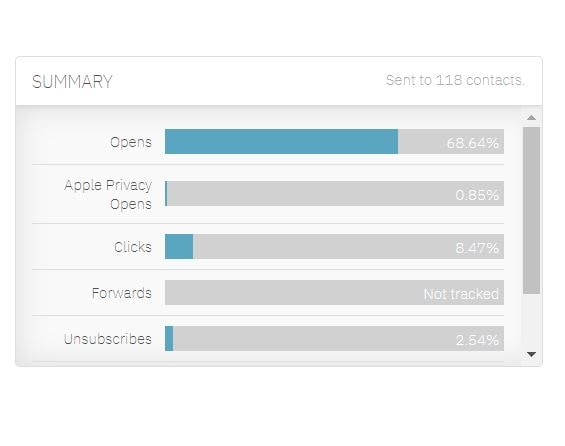
That is because these subscribers are excited to receive the lead magnet they just opted-in to get.
They are eagerly awaiting to receive your email.
Here are a handful of tips for crafting a welcome email that stands out and sets you up to live in your subscriber’s inbox:
- Give them an over-the-top welcome by glowing about how excited you are to have them as your latest subscriber.
- Use a unique brand voice… i.e., do NOT be boring. No one wants another dry as dirt, boring email to read.
- Call attention to the value and benefit of the lead magnet you are giving them. (This builds reciprocity.)
- Give them a reason to keep reading your emails by teasing the benefits they’ll enjoy by being on your list.
- Ask them to whitelist your email.
- Close it out by asking a simple question that necessitates a response. For example:
7 welcome emails that quickly turn new subscribers into customers
Once you have grabbed your subscriber’s attention with your unforgettable welcome email, you want to keep emailing them.
Here are seven types of follow-up emails you can send to turn your welcome automation into a sales machine.
Email 1 – Founder/Mission Story – Share the journey and mission to creating your course, product, or service. Let your subscribers know the “why” behind your business.
Email 2 – The Differentiation – Show your subscribers the secret sauce that makes your product different or better than all the other options.
Email 3 – Answer the big questions – Answer the most common or burning question you hear from your customers.
Email 4– Blow them away with results – Share your glowing testimonials. Or show proof that your product will deliver on its promise.
Email 5 – Blow them away with benefits (the price Justifier). – Share the long list of benefits that make your product or service’s cost seem like a drop in the bucket.
Email 6 – Going – start to create urgency by taking any discount, bonus, or freebie you’re offering off the table.
Email 7 – Gone – Remind your subscriber one last time that your welcome bonus or offer is about to disappear.
For a more in-depth explanation of how to construct the Perfect Welcome Automation, check out this episode of the Art of Selling online courses:
With your lead flow turned on full blast…
… And your Welcome Automation running…
… It’s time to work on your email campaigns
Save more sales with cart abandonment emails
The second most important email automation you can build is the Cart Abandonment sequence.
Cart abandonment emails help bring customers back to your store when they leave items in their check-out carts.
Say, for example, a visitor is shopping your site.
They put a few items in their cart.
But then they get distracted by something else and forget to check out.
As long as you have this visitor’s email addresses you can send them messages about the items they forgot to buy.
Cart abandonment emails tend to perform very well because they are behavior based.
On average, cart abonnement emails convert 4% of would-be forgotten purchases.
Most email marketing software has pre-configured cart abandonment automations.
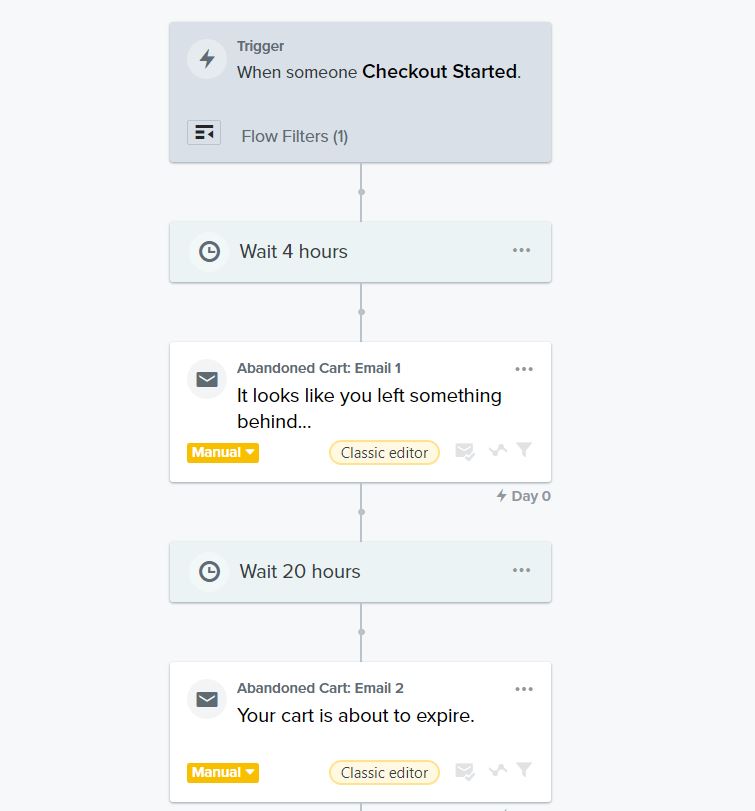
All you have to do to run these automations is adjust your email content and turn them on.
But you can improve your cart recovery by twice as much using this email framework.
The Cart Abandonment Email Framework that recovers twice as many sales
Typically, cart abandonment automations use two emails to try to recover sales.
And those emails are both sent within 24 hours of a visitor abandoning their cart.
But we’ve found you can recover twice as many sales by sending twice as many emails
- One hour after the abandoned cart, send – “I admit I was spying on you while you were shopping, but I noticed you left this behind” message.
- Five hours after an abandoned cart, send – “Short story related to the product your shopper left in their cart” message.”
- 24 hours after an abandoned cart, send – “Funny story about how you’re riddled with anxiety waiting to see if your shopper will checkout and seal the deal” message.
- 48 hours after an abandoned cart, send – “Here’s a little extra ‘sweetener’ discount” message.
Whether you use the stock automation in your email tool, the framework above, or another strategy…
…. The important thing to do is to set up some type of cart abandonment automation.
These emails perform well and recover sales.
Under the radar email marketing KPIs that are worth measuring
We already talked about a handful of more popular email marketing Key Performance Indicators (Open rate, click rate, unsubscribe rate, etc.).
However, if you really want to measure the worth of your email marketing, here are a handful of metrics to focus on:
Monthly Net New Subscribers – the number of new subscribers you attract every month minus the subscribers you lose.
Yearly revenue per subscriber – Total sales from email divided by your total list size.

Welcome Sequence Conversion Rate – Number of sales divided by the number of subscribers who pass through your welcome automation.

Total revenue per campaign – The total revenue earned per each unique email campaign you send.

Engaged Subscribers ratio – The number of subscribers who open or click the majority of emails divided by your total list size.

As I stated earlier, every business or list will have its one unique baseline.
The goal of tracking these metrics isn’t to benchmark yourself against the competition….
… but rather to monitor and improve each of these metrics.
Because as you improve each one of these KPIs, the health of the revenue you generate from email marketing will go up.
And so will the health and value of your email list.
Recapping the top tips and tactics for success with email marketing
We covered a lot of ground in this in-depth, highly tactical guide.
Here’s a condensed review of the highlights:
- Attracting new subscribers is the key to revenue growth in email marketing.
- Create a highly desirable lead magnet.
- Promote your lead magnet everywhere you can!
- The more deliverable you make your email campaigns, the better they will perform.
- Send subscriber-focused messages.
- Use segmentation.
- And test your emails before you send them.
- Use a 3 part (nurture, offer, urgency) email campaign to increase your sales and engagement.
- The most powerful tool in your email automation toolbox is your welcome.
- Set up or turn on your cart abandonment email automation. (It’s an easy way to save the sale!)
- When it comes to tracking your metrics, look at more than just opens and clicks.
That covers all our top tips and techniques for turning email marketing into a high-powered brand and revenue-building machine.
So now, I’ve got to ask you…
… Did you learn something new?
Did you enjoy it? If you did, leave a comment below about the tip you found most helpful and why.
And if I missed something, leave a comment below with your contribution to this free guide!
Even More email marketing resources
What’s that? You can’t get enough? You want to be in the top 1% of email marketing geniuses in the world? Great.
Here are some more resources that will turn you into an email marketing mastermind:
What is an Email Preheader? A Guide to 6 Best Practices
Images In Email Best Practices: 9 Rules to Follow
Email Marketing Funnels: Why You Need Them and How To Use Them
How Does A Funnel Calculator Work?
How To Run Effective Re-engagement Campaigns
Grow Your YouTube Channel With Email Marketing









